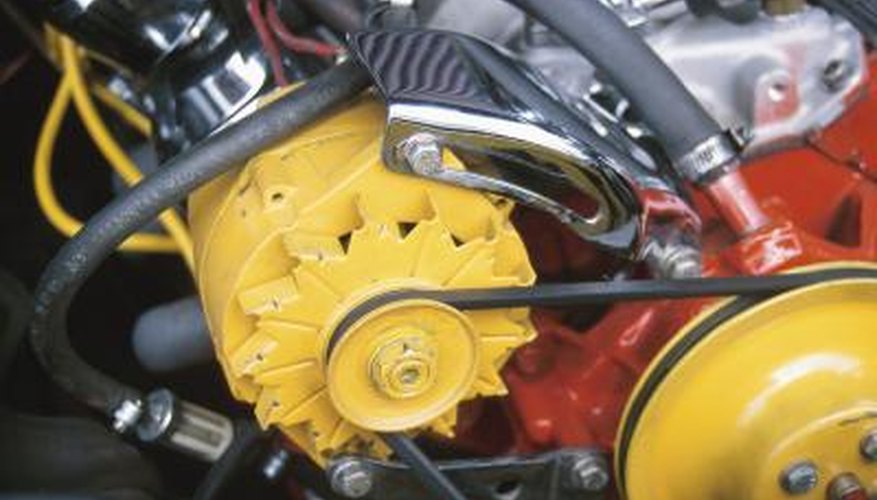The V-belts on an engine are powered by the crankshaft pulley. V-belts engage the pulleys of various engine components and cause them to operate. On most vehicles these belt-driven components include power-steering pumps, alternators and water pumps. Some engines also incorporate belt-driven air pumps and air-conditioner compressors. A broken V-belt must be replaced, as no sufficiently durable repair to the belt is possible.
Raise the hood of your vehicle and locate the component that was driven by the V-belt. Inspect the pulley and ensure there are no burrs on it that could damage the new V-belt. If any are found remove them with the file.
- The V-belts on an engine are powered by the crankshaft pulley.
- Inspect the pulley and ensure there are no burrs on it that could damage the new V-belt.
Locate the adjustment bolt for the component and loosen it with the wrench. Turn it counterclockwise to loosen. Do not remove the bolt completely. Push the component in, toward the engine. This allows the new V-belt to fit over the pulleys.
Place the new V-belt over the component's pulley and the crankshaft pulley. Pry outward on the component so that the belt is tight. Tighten the adjustment bolt by turning it clockwise with the wrench.
- Locate the adjustment bolt for the component and loosen it with the wrench.
- Place the new V-belt over the component's pulley and the crankshaft pulley.
TIP
Carry a spare V-belt in your boot. These belts are inexpensive and are easy to find, until you need one. Find the appropriate belt and keep it handy before a roadside emergency arises.
WARNING
Never attempt to operate a vehicle with a broken V-belt.
